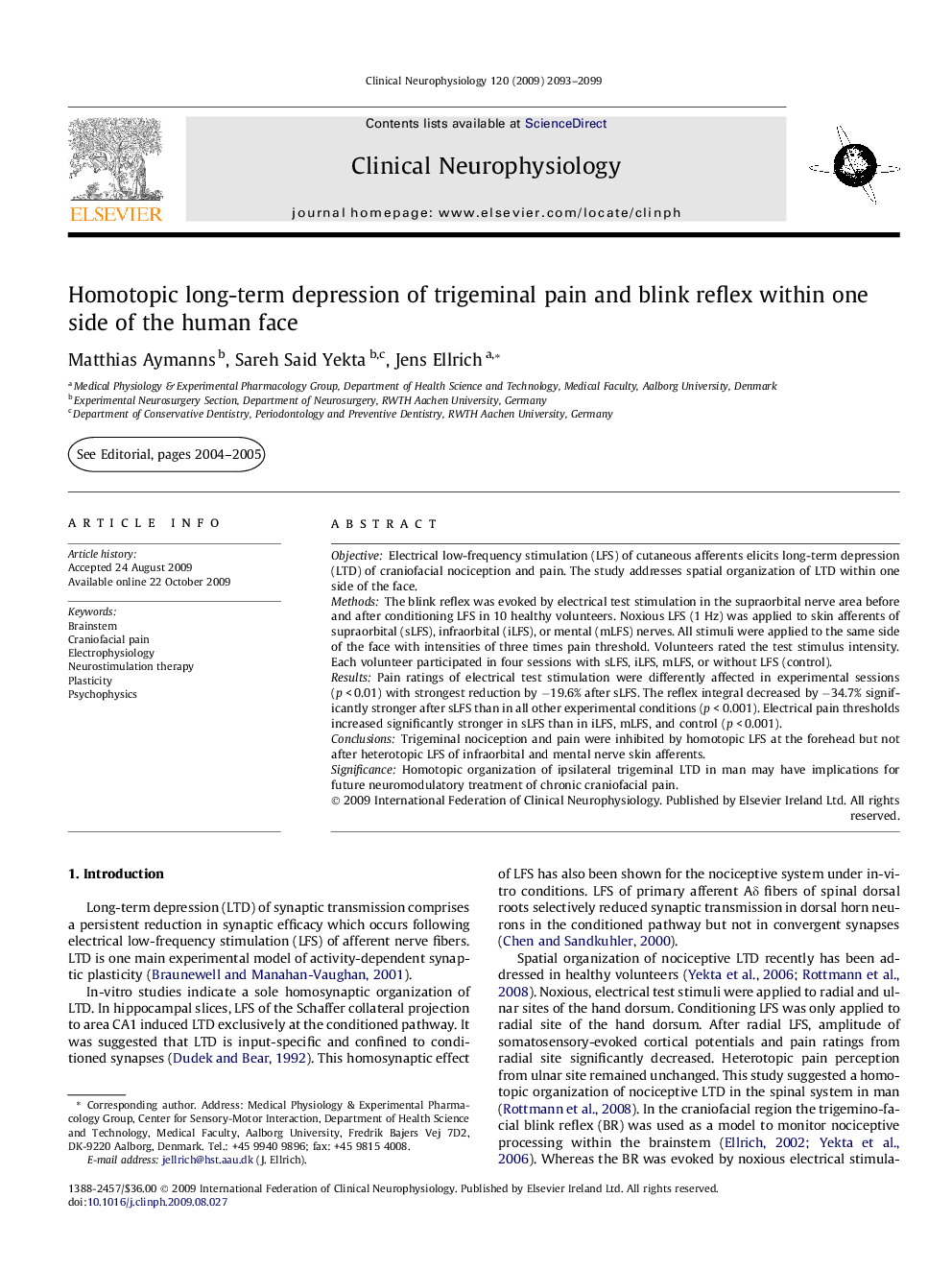| Article ID | Journal | Published Year | Pages | File Type |
|---|---|---|---|---|
| 6009053 | Clinical Neurophysiology | 2009 | 7 Pages |
ObjectiveElectrical low-frequency stimulation (LFS) of cutaneous afferents elicits long-term depression (LTD) of craniofacial nociception and pain. The study addresses spatial organization of LTD within one side of the face.MethodsThe blink reflex was evoked by electrical test stimulation in the supraorbital nerve area before and after conditioning LFS in 10 healthy volunteers. Noxious LFS (1 Hz) was applied to skin afferents of supraorbital (sLFS), infraorbital (iLFS), or mental (mLFS) nerves. All stimuli were applied to the same side of the face with intensities of three times pain threshold. Volunteers rated the test stimulus intensity. Each volunteer participated in four sessions with sLFS, iLFS, mLFS, or without LFS (control).ResultsPain ratings of electrical test stimulation were differently affected in experimental sessions (p < 0.01) with strongest reduction by â19.6% after sLFS. The reflex integral decreased by â34.7% significantly stronger after sLFS than in all other experimental conditions (p < 0.001). Electrical pain thresholds increased significantly stronger in sLFS than in iLFS, mLFS, and control (p < 0.001).ConclusionsTrigeminal nociception and pain were inhibited by homotopic LFS at the forehead but not after heterotopic LFS of infraorbital and mental nerve skin afferents.SignificanceHomotopic organization of ipsilateral trigeminal LTD in man may have implications for future neuromodulatory treatment of chronic craniofacial pain.
